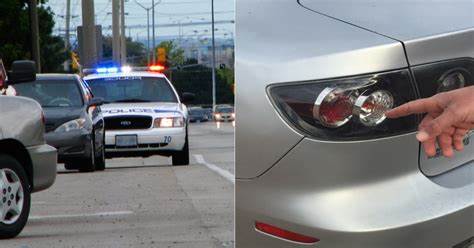Nope, it’s not because they’re trying to buff out that scratch above your bumper.
Say you’re driving on your local road, and you enter a construction zone. The construction is wrapping up for the day, the sun is coming down, and you just miss the four-sided “Reduce Speed Ahead” sign. You come to the octagonal Stop sign, and notice a state trooper pulled up behind you. The trooper’s flashers turn on, and you realize that you may have been speeding.
You pull over, and as the officer approaches the car, you hear a quick tap on the back of your car. The officer touches your tail light as he came to your window, and you come to realize that you’ve seen this before. Actually, you’ve seen this quite a bit.
This common cop practice isn’t rooted in superstition, and it isn’t a secret. As it turns out, it’s based in the officer’s well-being.
According to The Law Dictionary, this routine maneuver serves as a sort of bread crumb left to prove that the police officer had approached that particular vehicle. Before dash cams and body cams, the fingerprints left on the tail light served as a primary form of evidence about the traffic stop. If the officer’s safety were to be jeopardized by the driver, investigators could track that hand stamp to the suspect in question.
Additionally, the tap can serve as a means of jarring an intoxicated driver or a driver in possession of illegal materials.

Sorry, the comment form is closed at this time.